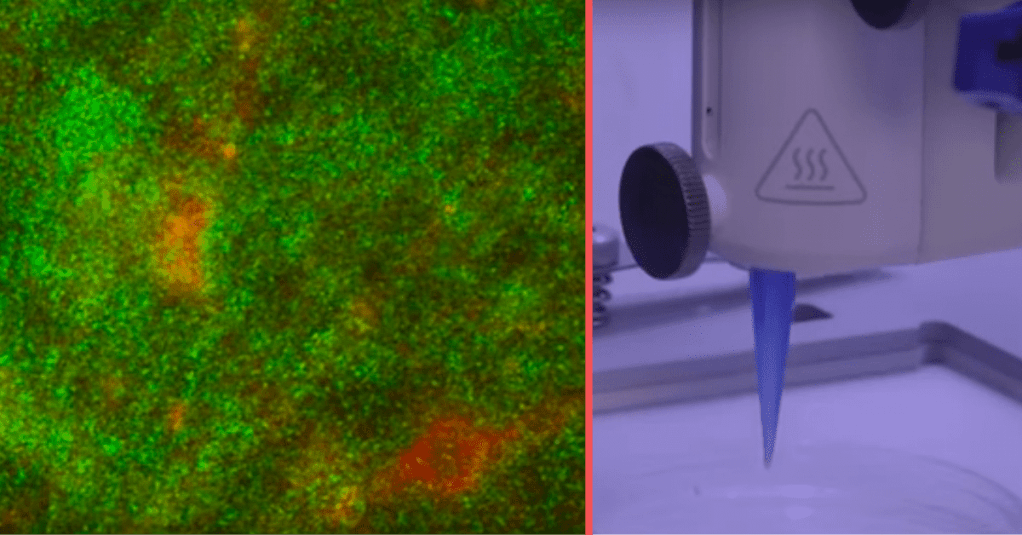Trending Now
Science is amazing. It constantly blows my mind.
It seems like you can 3D print just about anything these days, but researchers have taken it to a whole new level by printing actual living skin.
The best thing about science is how it changes over time, as we learn and discover.
50 years ago, there was basically only one skin-grafting technique to treat a burn victim, and it was the same technique developed 100 years earlier: taking a piece of skin from another part of patient’s body, or autologous skin grafting.
As Smithsonian Magazine points out, however, these can be painful and create a secondary wound that has to be maintained in order to prevent infection.
Today there is a second option, a graft using synthetic material, which doesn’t always “take” and doesn’t necessarily behave or look like real skin.
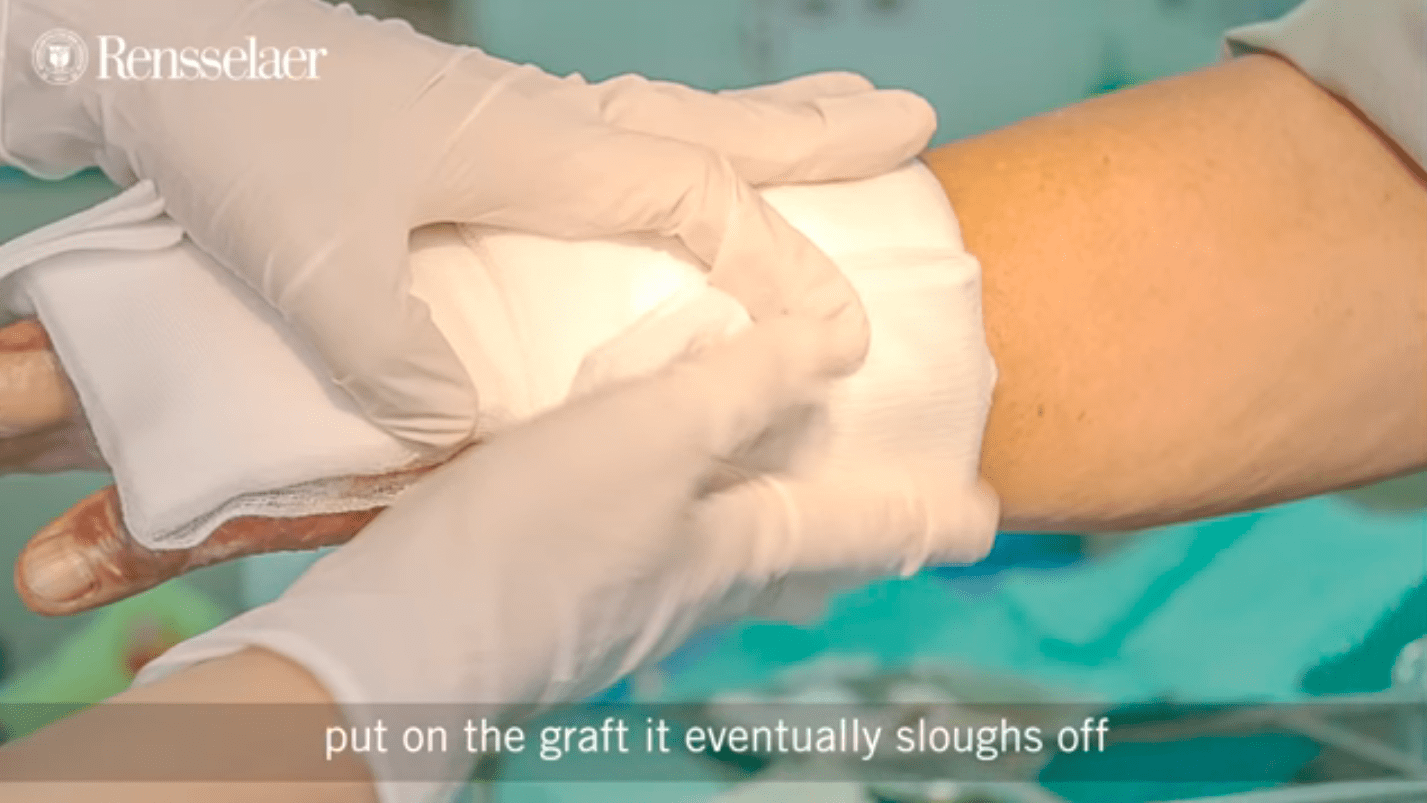
Image credit: YouTube
But in the not-so-distant future, there may be a better way.
Researchers led by Pankaj Karande at the Rensselaer Polytechnic Institute (RPI) in coordination with Yale University have now 3D printed living, working skin tissue by reducing human skin cells to a liquid called “bio ink,” which is only a little bit gross.
Using different types of cells, the team created two different types of what they call “bio ink,” one to make an inner layer of skin, and one to make an outer layer of skin. The right cells in combination began working together to form blood vessels.
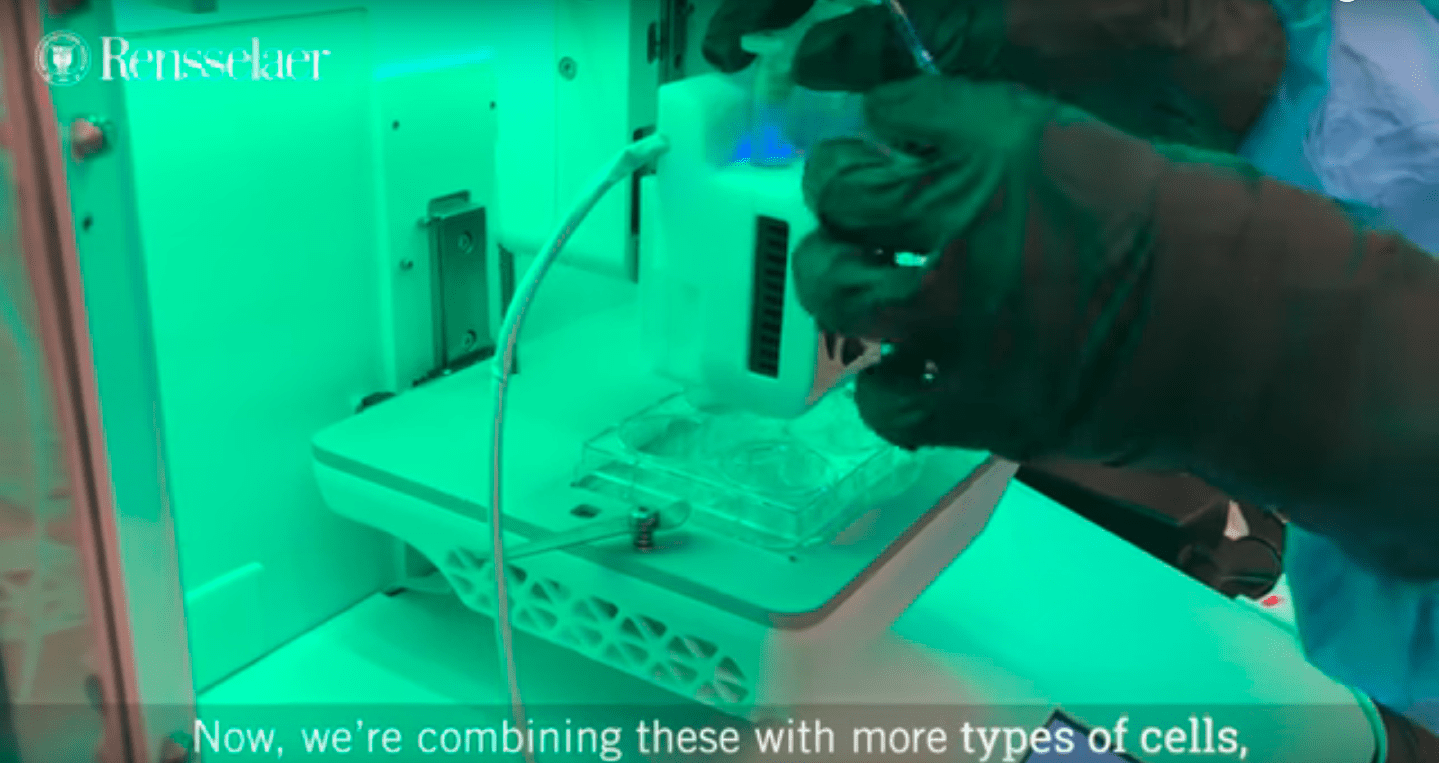
Image credit: YouTube
That is the most amazing thing about their work, which was recently published in the journal Tissue Engineering Part A.
As Professor Karande explains:
“The vasculature is very important because that’s how the host and the graft talk to each other. Communication between host and graft is critical if the skin substitute is not to be rejected by the body.”
Rejection is one of the greatest concerns for any type of transplant or graft, but when tested in mice they found that blood was flowing between the mouse and the transplanted skin within four weeks.
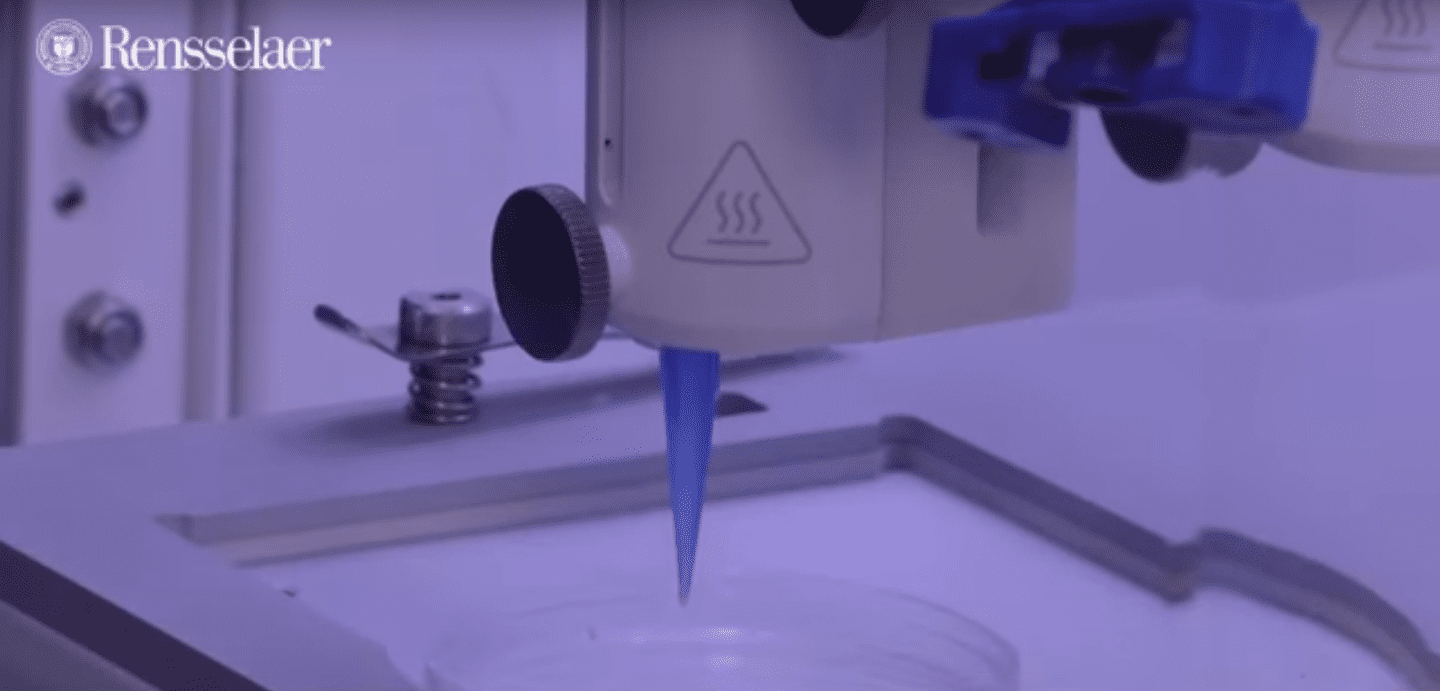
Image credit: YouTube
The scientists have also figured out how to affect the pigment of the 3D skin, to suit any ethnicity.
Melanocytes can be added to the bio ink in greater or lesser numbers depending on the color desired.
But there is more work left to do in order to make the 3D skin as human-like and safe as possible.
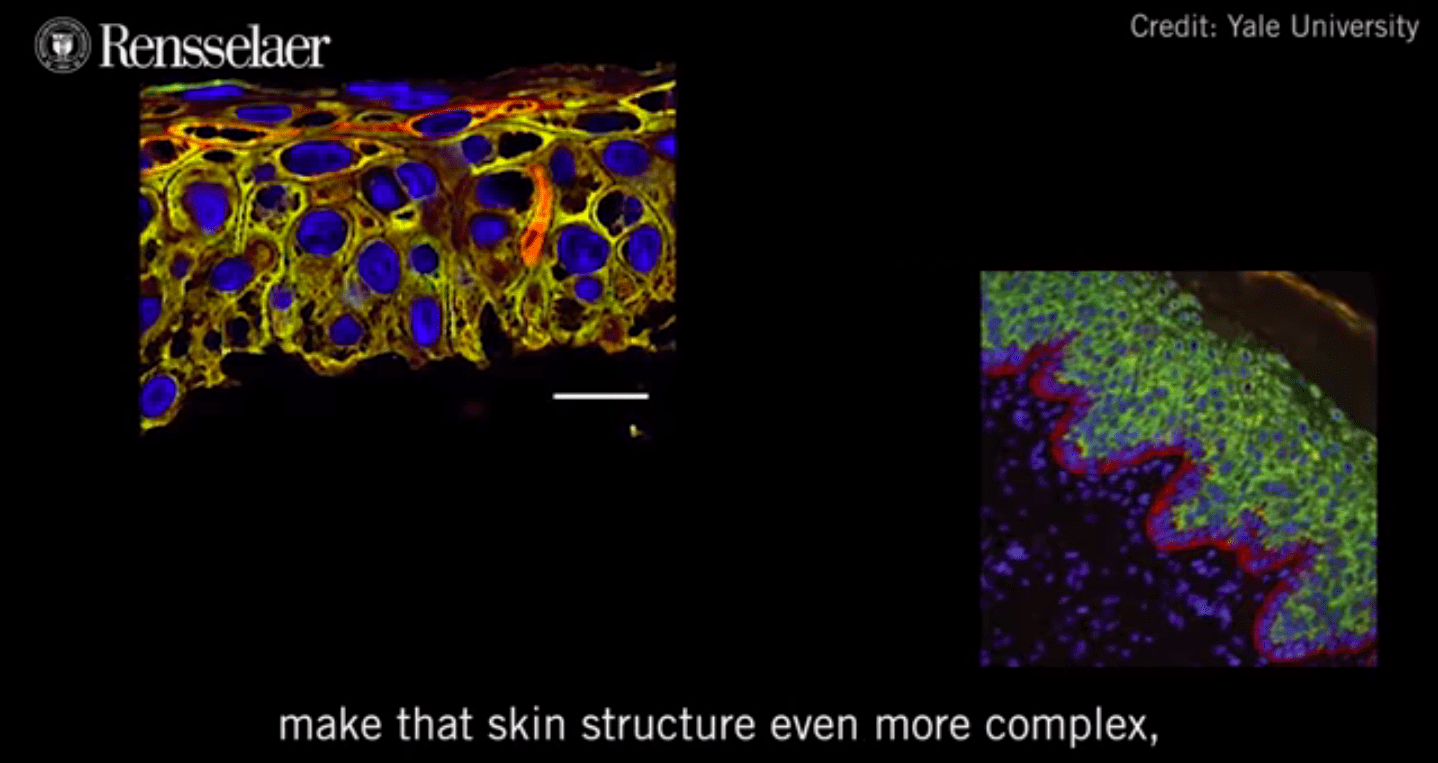
Image credit: YouTube
As Smithsonian points out:
Karande says,
There’s the question of skin structures like sweat glands and hair follicles, which can be damaged or destroyed by burns and injuries.
“Some of these are important for function and aesthetics.
You want the skin at the graft site to look as much like the surrounding skin.”
Unfortunately 3D printing sweat glands has shown less spectacular results.
Karande said:
“We’re still at the basic research stage.
We’re still figuring out the basic problems and what the right answers might be.”
But someday soon, this could be an amazing treatment for people who suffer from severe burns.
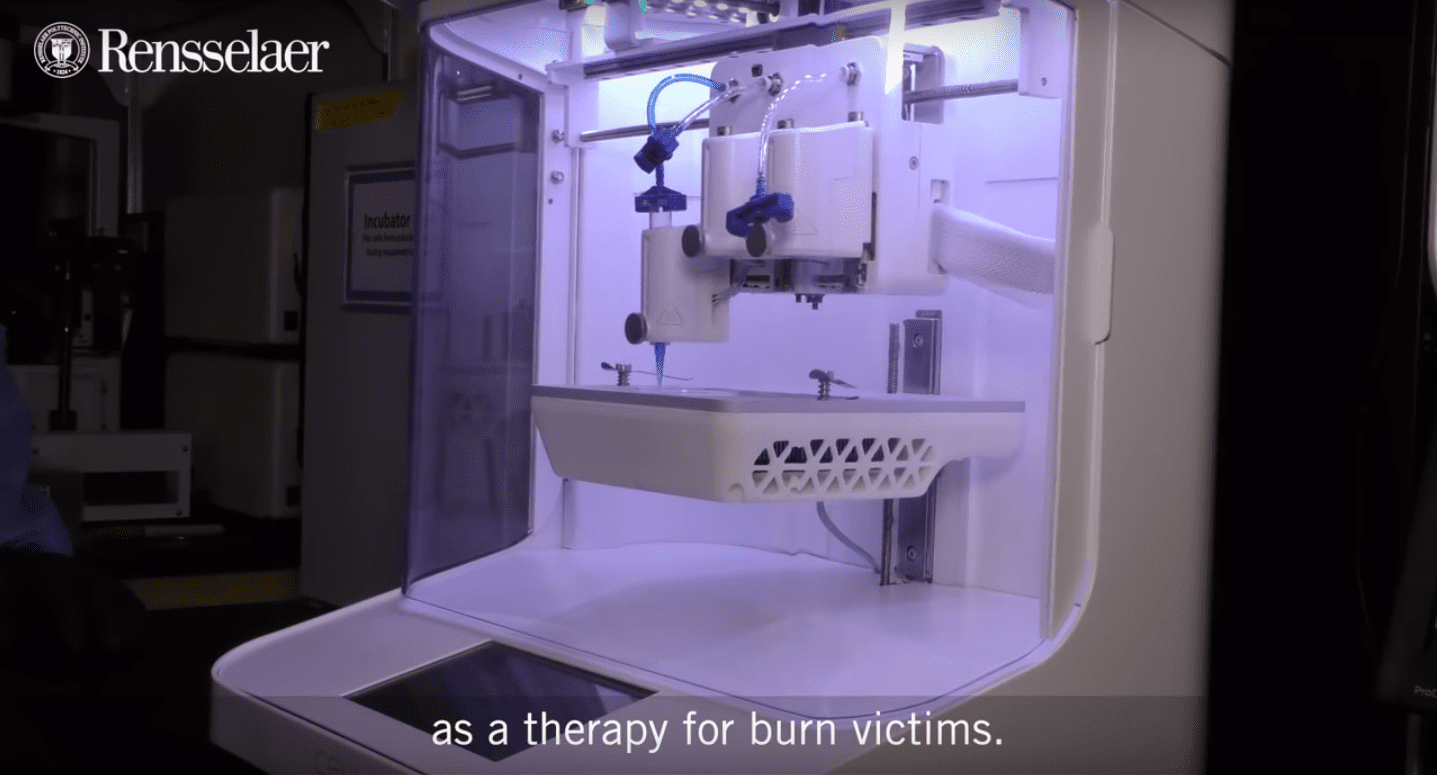
Image credit: YouTube
But someday soon, this could be an amazing treatment for people who suffer from severe burns.
For more on this fantastic new technology, check out this fascinating video from RPI featuring Professor Karande:
I love how fast science is progressing these days. I can’t wait to see what they come up with next.
Did this totally blow your mind 🤯? Let us know in the comments!

